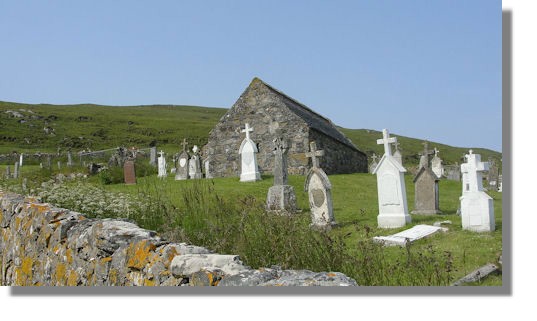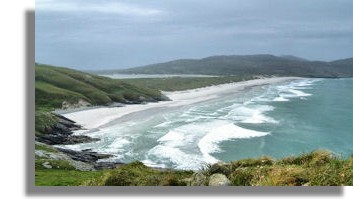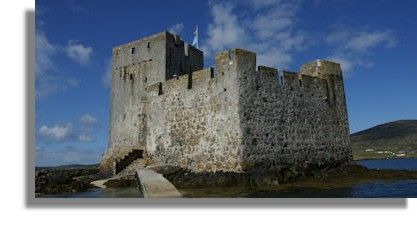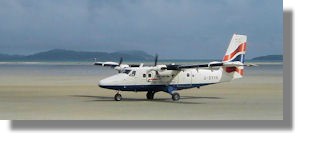

Gaelic and Celtic Customs
from the Hebrides and Beyond
Fada's Farsaing (Far and Wide) is a series of articles by Liam O Caiside in English but with Gaelic words and phrases interwoven in the text. The articles describe a wide range of Gaelic and Celtic customs. These pages were originally published in the "Scottish Radiance" e-magazine and have been reproduced here with the kind permission of the Scottish Radiance editor, Sharma Krauskopf.

12th Century Church and Graveyard at Cille Bharra - Graphic via Wikimedia
Feast of St Barr 
September 27th was known as the Feast of St Barr and was celebrated on Barra in the Outer Hebrides of Scotland. Graphic here of Barra is via Wikimedia.
A Description of the Western Isles by Martin Martin in 1703 relates that:
All the inhabitants of the island observe the anniversary of St. Barr on this special day. It is performed riding on horseback, and the solemnity is concluded by three turns around St. Barr's church.
It is believed that in 620 AD Saint Barr established a building at Cille Bharra on the island of Barra. This is a collection of religious and secular buildings which earlier would have been a monastic community. One building has been restored, the others are in ruins. (See graphic of the church and cemetary above)
Located on the north end of the island on a steep hillside you will find a charming graveyard (see graphic at t top of thisd article) where in 1865 a curious stone was found with a Celtic cross on one side and a runic inscription on the other. It demonstrates that the Vikings settled in Barra long enough for some to accept the Christian faith. The original stone is in Edinburgh but there is a facsimile in the restored north chapel that also houses medieval tombstones. The ruined church nearby dates from the twelfth century.
Both this place and the island are named after Barra's mysterious patron saint, Saint Finnbarr or Saint Barr, the great-grandson of Niall of the Nine Hostages, the legendary 4th-century king of Ireland.

Alexander, Lord of the Isles granted the island to the MacNeil clan in 1427. The clan held the island including Kisimul Castle (picture here via Wikimedia) until 1838, when Roderick MacNeil, the 40th Chief of the Clan, sold the island to Colonel Gordon of Cluny. Gordon expelled most of the inhabitants in order to make way for sheep farming. The displaced islanders variously went to the Scottish mainland, Australia, New Zealand, the United States of America and Canada. Barra was restored to MacNeil ownership in 1937 when the Barra estate, which encompassed most of the island, was bought by Robert MacNeil, a U.S. architect, and 45th chief of the clan.

Barra International Airport (also known as Barra Eoligarry Airport) is a short-runway airport situated in the wide shallow bay of Traigh Mhòr at the north tip of the island of Barra in the Outer Hebrides, Scotland. The airport is unique, being the only one in the world where scheduled flights use a beach as the runway. Graphic of Loganair flight on the runway at Barra via Wikimedia.
Ben Eoligarry overlooks the grave of "Whisky Galore" author Compton Mackenzie's grave at Cille Bharra. (Island of the Church). The film of the book (known as "Tight Little island in USA) was shot on Barra.
Return to Fada's Farsaig Index
Where else would you like to go in Scotland?

